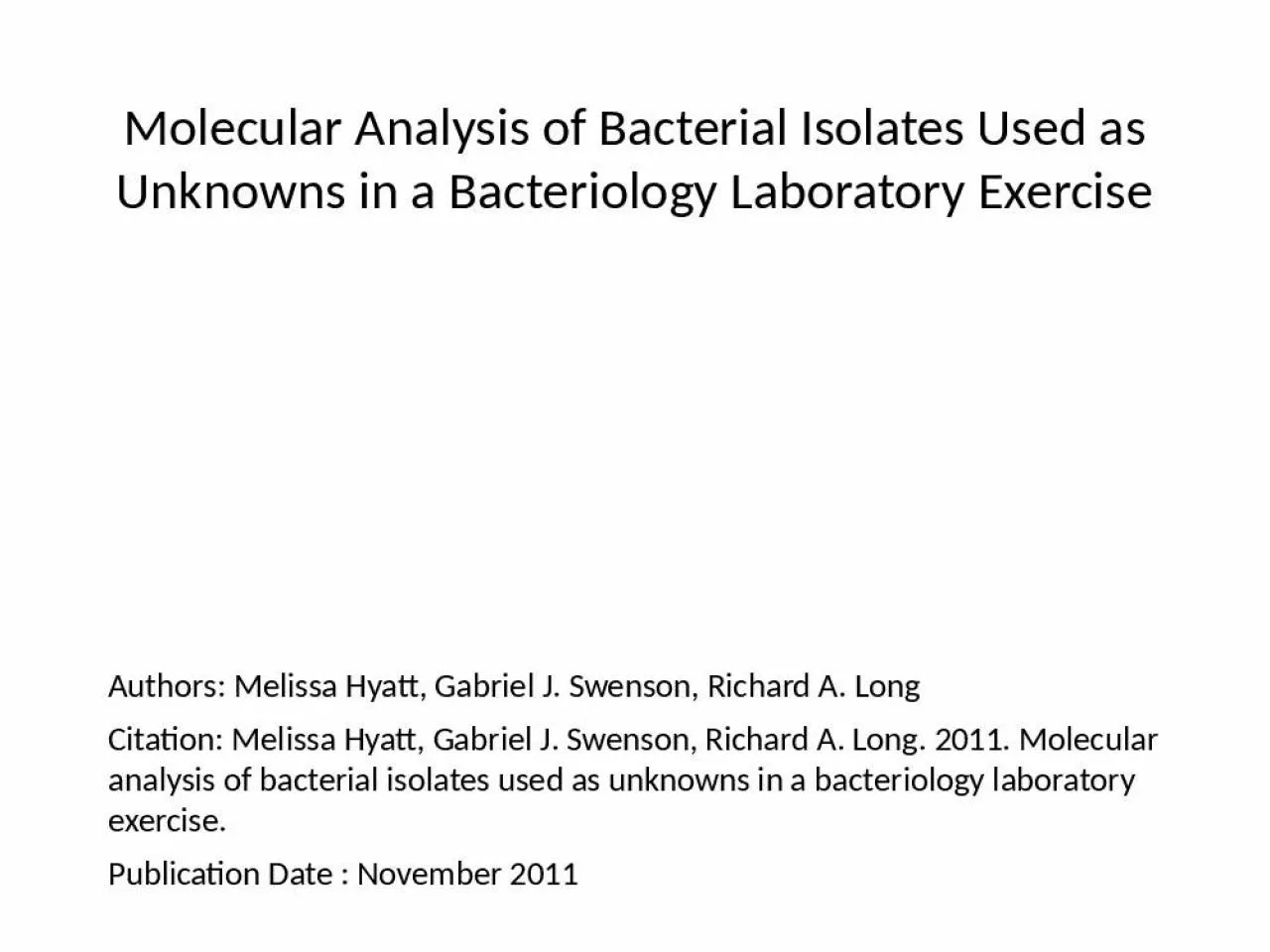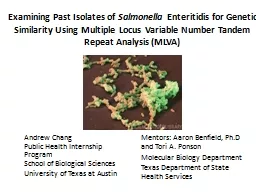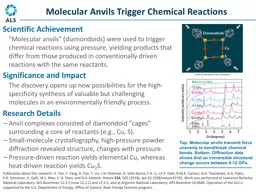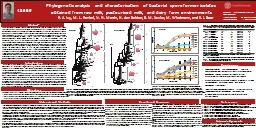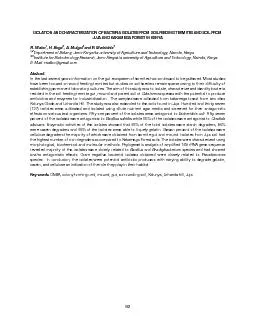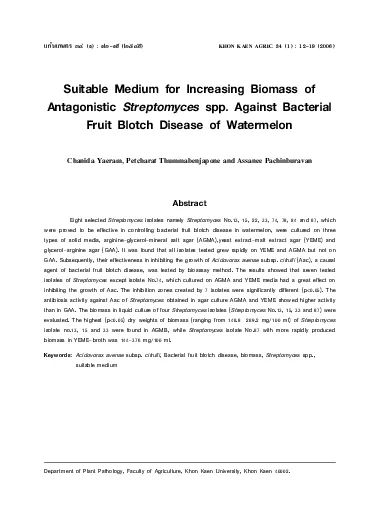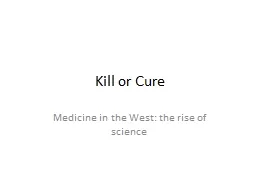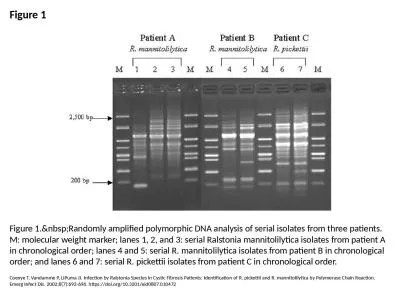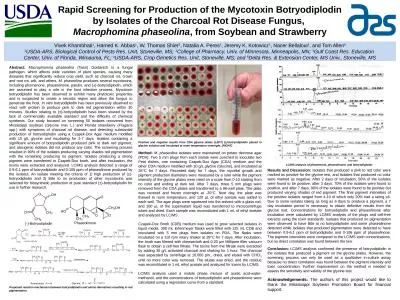PPT-Molecular Analysis of Bacterial Isolates Used as Unknowns in a Bacteriology Laboratory
Author : obrien | Published Date : 2022-05-31
Authors Melissa Hyatt Gabriel J Swenson Richard A Long Citation Melissa Hyatt Gabriel J Swenson Richard A Long 2011 Molecular analysis of bacterial isolates used
Presentation Embed Code
Download Presentation
Download Presentation The PPT/PDF document "Molecular Analysis of Bacterial Isolates..." is the property of its rightful owner. Permission is granted to download and print the materials on this website for personal, non-commercial use only, and to display it on your personal computer provided you do not modify the materials and that you retain all copyright notices contained in the materials. By downloading content from our website, you accept the terms of this agreement.
Molecular Analysis of Bacterial Isolates Used as Unknowns in a Bacteriology Laboratory: Transcript
Download Rules Of Document
"Molecular Analysis of Bacterial Isolates Used as Unknowns in a Bacteriology Laboratory"The content belongs to its owner. You may download and print it for personal use, without modification, and keep all copyright notices. By downloading, you agree to these terms.
Related Documents

